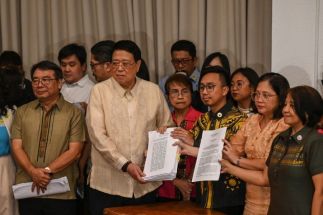RP hopes to sign pact on disaster response
MANILA, Philippines - Described as the “doormat” for typhoons in the region, the Philippines now hopes to join the ranks of Asian countries that have signed agreements with United Nations Office for Outer Space (UNOOSA) to establish a space-based disaster management response in the region.
The Philippines recently underscored the importance of space-based technology in helping countries prone to natural disasters prepare effective responses to calamities.
Philippine Permanent Representative to the UN Hilario Davide said the country was grateful for the satellite information provided by Space-Based Information for Disaster Management and Emergency Response (UN-SPIDER) of the United Nations Office for Outer Space (UNOOSA) based in Vienna.
“The Philippines notes with satisfaction the increase in the availability of space-based information to support disaster management and emergency response activities,” Davide said.
Davide stressed the Philippines took advantage of the practical usage of programs initiated by UN-SPIDER since the country is most vulnerable to typhoons in the region, with an average of 19 tropical cyclones every year.
“The recent onslaught and damage wrought by ‘Ondoy’ (Ketsana) and ‘Pepeng’ (Parma) in the Asia-Pacific region allowed the Philippines to experience the usefulness and effectiveness of satellite imagery in tracking the movement of these massive typhoons,” he said.
Davide said the satellite imagery of flooded areas in Metro Manila as well as those in Northern and Central Luzon that was provided by UN-SPIDER would be used by Philippine government agencies for disaster mitigation and response plans.
“Many of the causes and impacts of natural disasters are observable in real-time from space by earth observing systems,” Davide pointed out. “When efficiently combined with modern information distribution methods, such data can be sent rapidly to affected communities and local emergency agencies as early warning before the disaster occurs or as post-disaster maps to assist in recovery operations,” he said.
When Ondoy struck on Sept. 28, the UN-SPIDER immediately made an effort to consolidate satellite data on the typhoon and its impact, including post-disaster imagery to support the response effort in the Philippines.
Davide noted an officer was also put on duty 24 hours a day, seven days a week.
He said UN-SPIDER facilitated and requested the activation of international mechanisms and tasked certain satellites to monitor the weather situation in the Philippines.
UN-SPIDER also contacted additional satellite providers; sourced funds for non-free satellite imagery; and compiled, uploaded and shared this satellite information with the Philippines and other users.
- Latest
- Trending































